How To Prevent Van Theft

Despite modern locking systems on vehicles some criminals do manage to overcome them by using devices bought legally and relatively cheaply on the internet. All of these work by affecting the radio frequency imitated by the key fob / device, enabling vehicles to be stolen despite owners having possession of the key(s).
Most thefts are opportunistic. Taking simple measures to protect your vehicle and belongings can greatly reduce the chances of them being stolen.
Key and Fob
The majority of vehicles are accessed by a combination of traditional key and fob remote. The fob tends to be used more frequently than the key, due to the convenience of simply pushing a button.
However, criminals can block the radio signal between the fob and vehicle, using a signal blocker. You press your fob and walk away as normal thinking the vehicle is locked. But it isn’t!
Once inside your vehicle, thieves can remove any items they like or drive it away by plugging a reprograming device into the onboard diagnostics port (OBD – see photo below) and program a key, which may only take seconds.
Ports are easily accessible and located in the front foot wells / dashboard areas. By law, ports must be universal, (to allow any garage to service a vehicle). However, this also means they are accessible to criminals. The photo below gives an idea of where to look for.
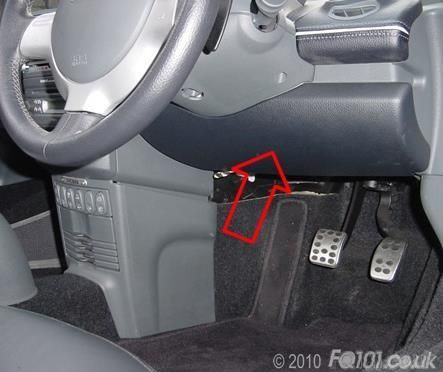
Preventative measures:
- Physically checking the vehicle is locked and checking ALL the doors
- Using the traditional key to lock up
- Make sure the key and any spares are stored securely and safely
Keyless Vehicles
Keyless vehicles automatically lock / unlock depending on the proximity of a key device, which is usually no bigger than a bank card. The system operates via radio signals passed between the vehicle and the key device. These signals can be intercepted by criminals.
Keys constantly emit a signal, (at times even detectable from within a building), which can be picked up by anyone with an appropriate transmitter relay device. The signal is relayed back to the vehicle, which unlocks and allows the start button to work and once away from the scene of the crime, a new key can be programmed via the OBD port (see above).
Preventative measures:
- Keep your key device in a Faraday pouch, which has a lining that prevents the items inside from receiving or transmitting radio frequency signals. See below example.
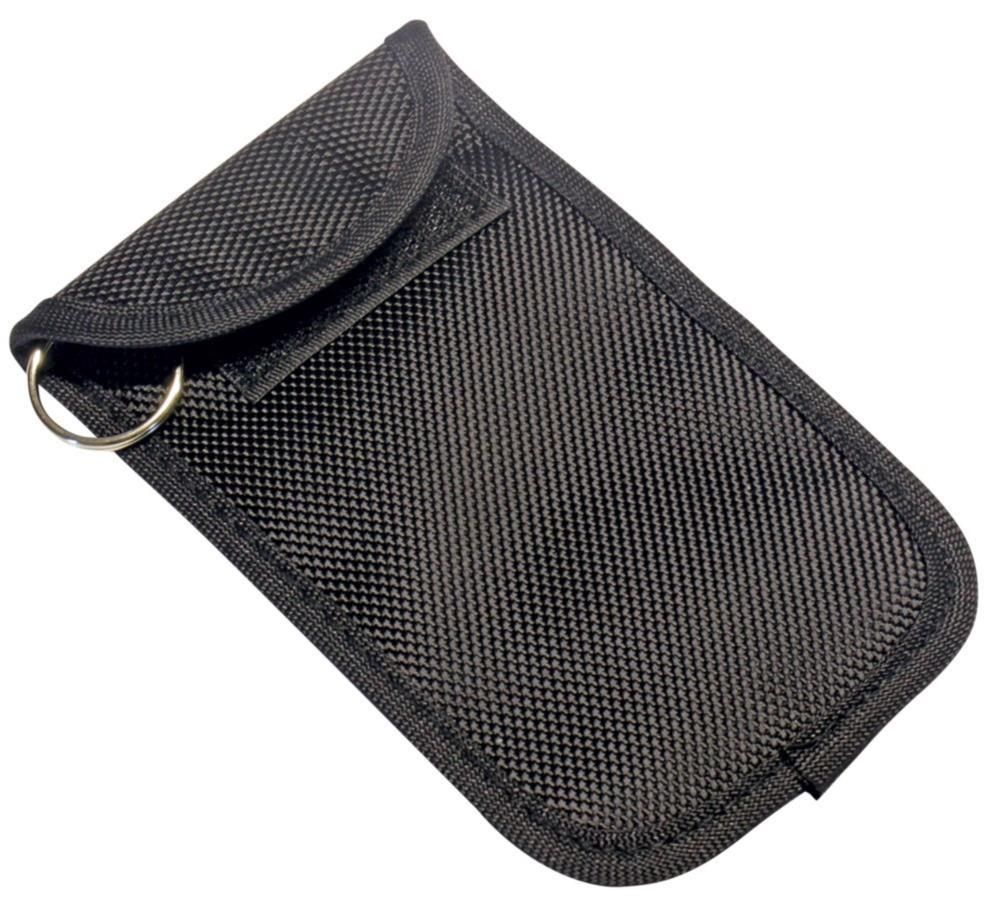
- Check vehicle doors are locked before walking away
- Do not store keys near windows or doors
- If you buy a second-hand keyless car, get the key reprogrammed
- Make sure the key and any spares are stored securely and safely
Lock Picks
There are several lock pick devices which are legally available and can be used to unlock various types of vehicles, although primarily vans. Alarms linked to the central locking system may also be disabled. Although, engine immobilisers and secondary independent alarms will not.
Should the thief be able to access the onboard diagnostics port (see Key and Fob section) and connect a reprogramming device, they will be able to bypass the immobiliser and produce a new key in minutes.
Preventative measures:
You may wish to consider replacing existing locks with more robust locks, e.g. slam and dead locks, designed to withstand attack by tools such as grinders and lock picks. They will also act to reinforce the area around the locks.
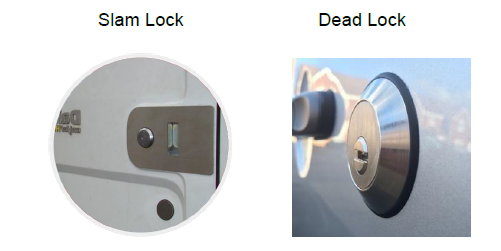
Similarly loom guards and door keepers can help protect against door peeling.
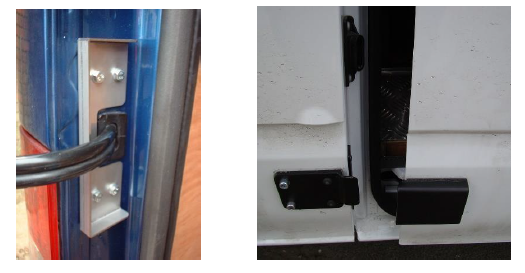
Additional Security Devices
In addition to the measures described above, the following can also be used to prevent crime:
Forensic Property Marking
Several companies offer schemes, using micro dots visible only to UV light to mark many parts of a vehicle. Assisting in identification of the owner when the vehicle is recovered.
Pedal Boxes
Lock boxes which secure the driving pedals, primarily used in vans but are transferable.
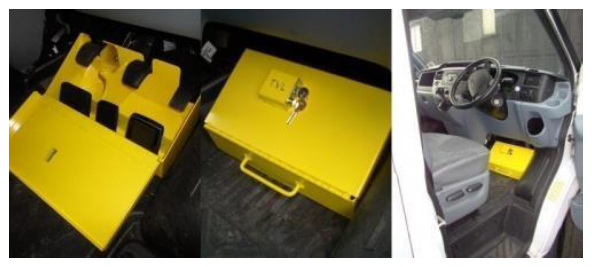
Steering Locks
They vary greatly in design and cost and remain a very effective visible deterrent, slowing thieves down.
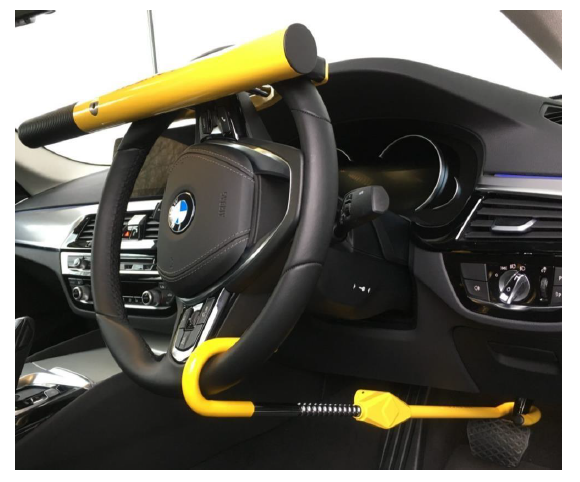
CCTV
Small stand-alone motion sensitive cameras can be easily fitted into the cab or load area and linked directly to a mobile phone. Although, a light source should be considered for optimal images.
OBD Port (on-board diagnostic port) – see Key & Fob section above
These can be relocated so they are not so easily accessible to criminals. Depending on the location lock boxes can be used to secure ports, slowing thieves down.
Trackers
These are frequently fitted to works and high value vehicles and can assist with locating the vehicle should it ever be stolen. Some companies also offer a recovery service.
Although sometimes trackers are removed or the GPS signal blocked, they remain a good crime prevention measure and continue to assist in the recovery of stolen vehicles.
Alarms
Many vehicles will have a factory fitted alarm. However, this will be linked to the central locking system and may be affected by lock pick tools, a secondary alarm could act as a backup.
Catalytic Converters
Catalytic converters are often stolen as they contain precious metals and are subsequently expensive to replace. Thefts can be deterred / prevented by forensic property marking and products such as CATLOC and CATCLAMP.
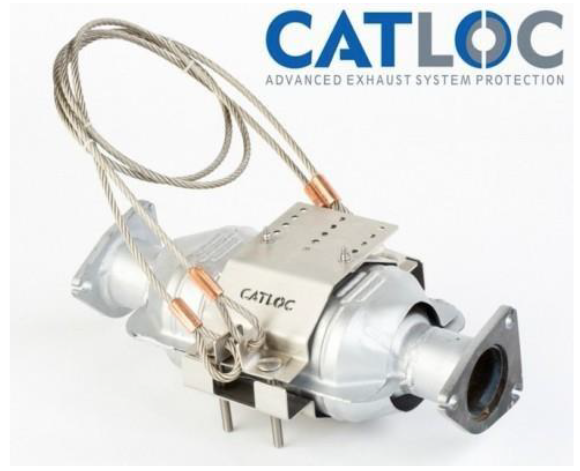
And Finally
- Always remove keys from the ignition and lock the vehicle when left unattended. Even if leaving the vehicle for a short time.
- Make sure keys (inc spares) are stored securely – do not leave on hall tables, on hooks by doors, in bags or coats by doors.
- Never leave valuables unattended in the car and never leave items within a vehicle overnight. Even if out of sight.
- Keep documentation about your load safely tucked out of sight. Don't talk to others about what you're doing, where you're going or what you're carrying.
- If you realise a theft from your vehicle is going on, don't leave the safety of your cab. Lock the doors, start the engine, switch on the lights and if necessary sound the horn to attract attention.
- Avoid parking in dark, secluded areas, choose locations that are well lit and over looked by houses, passers-by and covered by CCTV if possible.
- Park your vehicle in a garage / private space if available but make sure it is secure:
- Windows covered over / boarded up
- Pedestrian door should be solid core and secured by British Standard 5 lever mortice lock into solid frame
- Main doors secured by additional locks to prevent up and over action of traditional garage doors
- Consider linking garage doors into main house alarm system or use of an independent shed style alarm may be appropriate in some cases
- For private parking spaces / driveways consider installing parking bollards or even wheel clamps, again these will slow thieves down
- Simple WIFI CCTV systems can be used to monitor vehicles in private spaces and in some cases on the public road – please refer to the Information Commissioners Office – www.ico.org.uk – search CCTV.
- Be mindful of distraction thefts, when the driver is encouraged to leave their vehicle unattended.
- During busy periods, drivers may be put on additional routes, extra warehouse staff, temporary drivers and agency staff recruited. All these situations can create weaknesses in your company's security procedures, so be extra alert for anything unusual.
- Make sure your insurance covers any items you may be carrying.
For further assistance please contact Police Scotland:
Tel: 101 and ask for the Preventions Department or Police Scotland webpage:
scotland.police.uk/advice-and-information/road-safety/protecting-your-car
Police Scotland recommends using security products accredited by the following:




